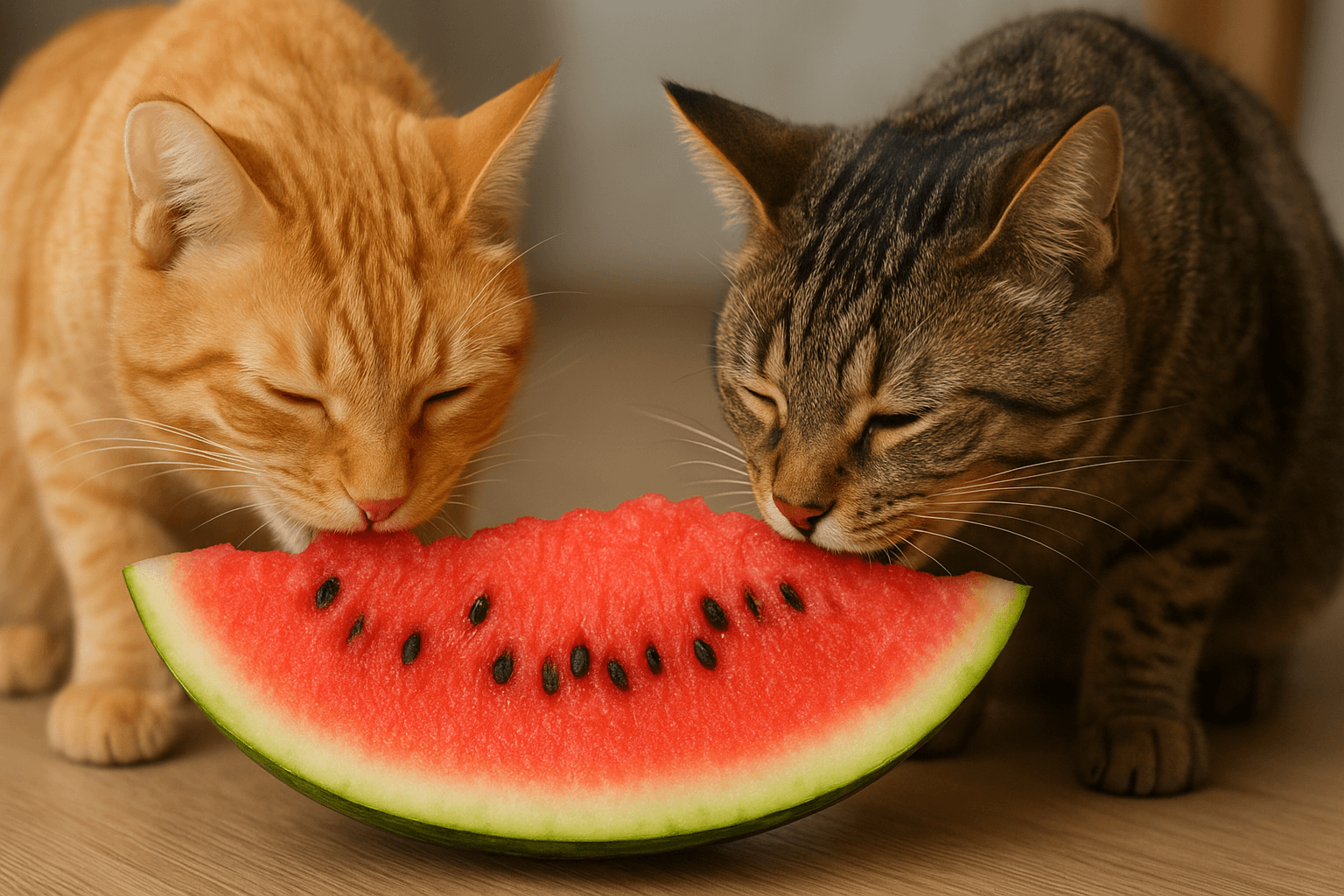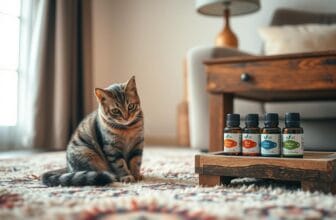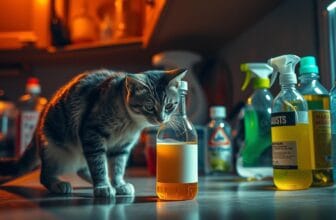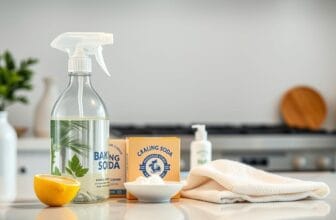
Table of Contents
Did you know your favorite houseplant could harm your cat? Every year, thousands of cats get sick from toxic plants. This turns a peaceful home into a health risk.
The ASPCA Animal Poison Control Center said nearly 10% of pet poison calls in 2021 were about cats eating toxic plants. This shows how important it is for cat owners to know about plant poisoning risks and spot early signs.
Knowing the symptoms of cat plant poisoning can save your pet’s life. This guide will teach you how to spot dangerous plants, understand their risks, and act fast to protect your cat.
Whether you’re new to cat ownership or have been a pet parent for years, knowing about toxic plants is key. Your quick action can save your cat’s life if they accidentally eat a harmful plant.
Understanding Plant Toxicity in Cats
Cats are more likely to get sick from plants because of their special biology. Unlike other pets, cats have a unique way of breaking down toxins. This makes them very sensitive to harmful substances in plants.
There are a few main reasons why cats are at risk:
- Unique liver enzyme deficiencies
- Specialized grooming behaviors
- Curious exploratory nature
- Smaller body mass
Why Cats Are More Susceptible to Toxins
Cats can’t break down toxins as well as other animals because of their liver. This is why they are more likely to get sick from plants. Their liver works differently than dogs or humans, making them more at risk.
Cats’ grooming habits also put them in danger. When they lick plants off their fur, they eat toxins. This can lead to serious health problems.
Distinctive Metabolic Differences
Studies show that cats can’t handle many plant toxins. Their metabolism is different, making some substances very dangerous for them. This is unlike other pets.
“Cats have an extraordinary sensitivity to plant-derived chemicals that sets them apart from other household pets.” – Veterinary Toxicology Research
Knowing about these differences is key to keeping your cat safe. It helps prevent poisoning and keeps your cat healthy.
Most Common Toxic Plants for Cats
Cat owners need to watch out for plants that can harm their pets. Some houseplants are poisonous and can cause serious health issues. Knowing which plants are toxic is important for a safe home.
- Lilies – Extremely toxic, can cause severe kidney damage
- Sago Palm – Potentially fatal if ingested
- Oleander – Highly poisonous to cats and other pets
- Azalea – Can cause serious digestive and heart problems
- Daffodil – Toxic bulbs and flowers
Here’s a list of plants that can be harmful:
| Plant Name | Toxicity Level | Potential Effects |
|---|---|---|
| Lily | Extreme | Kidney failure |
| Sago Palm | High | Liver damage |
| Oleander | High | Heart complications |
| Azalea | Moderate | Digestive issues |
| Daffodil | Moderate | Gastrointestinal problems |
To keep your cat safe, learn about plants before you buy them. Make sure dangerous plants are out of your cat’s reach. If you think your cat ate a toxic plant, call your vet right away.
Different Parts of Plants That Can Be Toxic
It’s important to know about plant toxicity to keep your cat safe. Not all parts of a plant are dangerous, and the risk can change with the seasons.
Cats are more likely to get sick from plants because of how they metabolize. Different parts of a plant can be more or less risky for your cat.
Toxic Plant Components
Plants have many parts that can harm your cat. The most common harmful parts include:
- Alkaloids in leaves and stems
- Glycosides in flowers and roots
- Oxalates in plant sap
- Essential oils in certain plant tissues
Concentration Levels in Plant Parts
The danger from plants can change with the seasons. Some parts of plants are more toxic at certain times:
- Spring: Higher toxin concentration in new growth
- Fall: Increased toxicity in roots and bulbs
- Summer: Peak toxicity in flowering plants
- Winter: Reduced but still present toxin levels
“Not all green looks safe for cats – some plant parts can be silently dangerous.” – Veterinary Toxicology Expert
Understanding Toxin Variability
The amount of toxins in plants can vary a lot. Some plants might have minimal toxicity in leaves but extreme danger in roots or seeds. Always check which plants are safe and talk to a vet about risks.
Cat Plant Poisoning Symptoms
Knowing the signs of plant poisoning in cats is key to saving them. Symptoms can range from mild to severe, based on the plant and how much was eaten. Spotting these signs early can help protect your cat.
Cat owners should look out for these important symptoms:
- Gastrointestinal Distress: Vomiting (sometimes with blood), diarrhea, and less appetite
- Oral Irritation: Too much drooling, trouble swallowing, and mouth pain
- Behavioral Changes: Sudden tiredness, weakness, or odd hiding
More serious signs include:
- Breathing problems
- Abnormal heart beats
- Seizures or shaking
- Drinking more water and peeing more
- Possible kidney or liver damage
When symptoms show can vary a lot. Some signs might appear right after eating the plant. Others might take hours or days. It’s crucial to watch your cat closely if you think they’ve eaten a plant.
Quick vet help can greatly improve your cat’s chances of getting better from plant poisoning.
Each plant can cause different reactions. Knowing which plant your cat ate helps vets give the right treatment. If you see any odd symptoms, call your vet right away. Bring a piece of the plant if you can.
Emergency Response to Plant Poisoning
When your cat meets a toxic plant, time is of the essence. Quick and careful actions are key to protect your pet. This helps prevent serious harm.
Plant poisoning can quickly turn from a small issue to a serious threat. Knowing the right steps for emergency vet care is crucial. It can greatly improve your cat’s chances of survival and recovery.
Immediate Actions to Take
- Remove your cat from the toxic plant environment immediately
- Prevent further contact with the poisonous substance
- Collect a sample of the plant for veterinary identification
- Do not induce vomiting without professional guidance
“Quick thinking and rapid response are crucial in potential poisoning scenarios.” – Veterinary Emergency Experts
Critical Information for Veterinary Professionals
When you call emergency vet care, have this info ready:
- Exact plant species (if known)
- Estimated amount consumed
- Time of potential poisoning
- Observed symptoms
- Your cat’s age and weight
Remember: Professional medical intervention is always the safest approach in potential poisoning situations.
The Dangers of Lily Poisoning in Cats

Lily toxicity in cats is a serious threat to their health. These beautiful flowers can harm your pet badly, even with a little touch or eating them.
The danger of lily poisoning comes from its toxic effects on cat kidneys. All parts of the lily plant are potentially lethal – from petals and leaves to stems and pollen.
- Toxic lily varieties include Easter lilies, Tiger lilies, and Day lilies
- Lily poisoning symptoms can develop rapidly after exposure
- Even small amounts of plant material can trigger severe kidney damage
Lily poisoning symptoms show up quickly, usually within 6-12 hours. Your cat might feel:
- Vomiting
- Lethargy
- Loss of appetite
- Increased urination followed by no urination
If you think your cat has been near lilies, get them to the vet fast. Quick action can stop kidney failure and save your cat’s life.
Veterinarians say it’s always better to prevent lily toxicity in cats than to treat it.
Indoor Plants to Avoid with Cats
Keeping your home safe for your cat means choosing the right plants. Many indoor plants can be harmful to cats. It’s important to know which ones to avoid.
Cats love to explore and might nibble on plants. Some plants are not only pretty but also dangerous for your pet.
Dangerous Houseplants for Cats
- Peace Lilies: Highly toxic and can cause severe mouth and stomach irritation
- Pothos: Contains calcium oxalate crystals that can cause intense oral pain
- Dieffenbachia: Causes immediate burning and swelling if ingested
- Philodendron: Can trigger significant digestive tract problems
- Snake Plants: Mildly toxic but can cause nausea and vomiting
Safe Houseplants for Cats
There are many safe and beautiful plants for your home:
- Spider Plants
- Boston Ferns
- African Violets
- Areca Palm
- Bamboo Palm
Always check a plant’s safety before bringing it home. Your cat’s health is the most important thing when choosing plants.
Garden Plants That Are Poisonous to Cats
Your garden might look beautiful, but some plants can be harmful to your cats. Many common garden plants can be toxic to cats. This can lead to serious health problems if they eat them.
Cats are naturally curious and love to explore outside. It’s important to know which plants are toxic to them. This helps keep your pet safe and prevents poisoning.
- Azaleas: Highly toxic plants that can cause serious digestive issues
- Rhododendrons: Contain grayanotoxins that can affect heart function
- Daffodils: Bulbs and flowers contain dangerous alkaloids
- Tulips: Particularly toxic in their bulb form
Some plants can be very dangerous and need quick vet care. Symptoms of plant poisoning can range from mild gastrointestinal distress to severe cardiac and neurological complications.
When planning your garden, think about making safe areas for cats. Use fences or keep toxic plants out of reach. Knowing which plants are toxic before you plant can help keep your cat safe.
Always prioritize your cat’s safety when selecting garden plants and outdoor vegetation.
Preventing harm is the best way to protect your cat from toxic plants. Check your outdoor spaces often and remove any harmful plants. This way, you can make sure your cat has a safe place to play and relax.
Veterinary Treatment Options
If your cat gets poisoned by plants, getting them to a vet is key. Knowing the right treatment can greatly improve your cat’s health and chances of survival.
Cat poisoning treatment involves several important steps. Veterinarians carefully follow these steps to help your cat get better.
Diagnostic Procedures
Veterinary care for poisoned cats starts with detailed tests. Your vet will:
- Do a full physical check-up
- Ask for all the details about the plant your cat was exposed to
- Run blood tests to check organ health
- Use imaging tests if they think there’s internal damage
Treatment Methods
The treatment for plant poisoning depends on the toxin and how bad it is. Vets might do:
| Poisoning Severity | Treatment Approach |
|---|---|
| Mild Cases | Supportive care, anti-nausea meds, watching closely |
| Moderate Cases | Activated charcoal, IV fluids, treating symptoms |
| Severe Cases | Intensive care, antidotes, close monitoring |
Activated charcoal is often used to treat poisoning. It stops toxins from being absorbed. Sometimes, vets give specific antidotes based on the plant toxin.
Quick vet care is crucial for a good outcome. Call your vet right away if you think your cat has been poisoned.
Prevention Strategies for Plant Poisoning
To keep your cat safe from plant poisoning, you need to take action. Start by knowing the dangers in your home and garden. Cats are curious, so it’s important to protect them from plants.
Here are some ways to prevent plant poisoning:
- Research plants before bringing them home
- Remove known toxic plants from living spaces
- Create designated safe plant areas
- Use natural deterrents to discourage plant interaction
Here are some steps to cat-proof your plants:
- Elevate toxic plants out of your cat’s reach
- Use hanging planters or high shelves
- Install physical barriers around garden plants
- Provide alternative cat-friendly greenery like cat grass
Training is key in preventing plant poisoning. Teach your cat to stay away from certain areas. Use positive reinforcement and toys to keep them busy and away from plants.
Vets say it’s important to know which plants are safe and which are not. Keep an eye on your plants and act fast if you see any danger.
How Cats Process Toxic Substances
It’s important to know how cats handle toxins to keep them safe. Cats have a special way of dealing with harmful substances that makes them more at risk.
Cats process poisons differently than other animals. Their livers don’t have the right enzymes to get rid of toxins well.
Unique Metabolic Challenges
Cats face special challenges when dealing with toxins:
- Limited glucuronidation capabilities
- Reduced enzyme production for toxin breakdown
- Slower detoxification processes
“Cats are metabolically unique, making them more susceptible to certain toxic compounds than other animals.” – Veterinary Toxicology Experts
Critical Importance of Rapid Treatment
Cats can’t handle toxins as well as other animals. So, acting fast is key. When a cat eats something toxic, their body has a hard time getting rid of it quickly.
The key factors in how cats handle poison include:
- Speed of toxin absorption
- Concentration of toxic substance
- Individual cat’s metabolic rate
Veterinary professionals stress that quick medical help can greatly lessen the harm from toxins in cats.
Seasonal Risks and Considerations

It’s important to know about seasonal plant dangers to keep your cat safe all year. Different seasons have their own holiday plant risks. You need to watch out for these dangers more during certain times.
Winter holidays can be tricky for cats. Poinsettias might not be as toxic as thought, but their sap can still upset your cat’s stomach. Christmas trees can drop needles that cats shouldn’t eat. And holiday flowers like amaryllis or mistletoe are toxic.
- Spring gardening introduces new seasonal plant dangers with blooming flowers
- Summer potted plants can create additional risks for curious cats
- Fall leaf collection may expose cats to potentially toxic vegetation
Your cat might get curious about new plants in different seasons. Both indoor and outdoor places can be dangers at different times. Cats like to explore new plants, so you need to keep an eye on them.
“Prevention is always better than treatment when it comes to seasonal plant dangers for cats.” – Veterinary Safety Expert
To avoid holiday plant dangers, try these tips:
- Research plants before bringing them into your home
- Keep toxic plants out of your cat’s reach
- Create a designated safe space for your cat during seasonal decorating
Every season has its own plant dangers. By being informed and careful, you can lower the risk of plant poisoning. This way, you can keep your cat safe all year.
Creating a Cat-Safe Garden Environment
Creating a safe outdoor space for your cat needs careful planning and the right plants. It’s not just about avoiding toxic plants. It’s about making a place where your cat can explore safely and happily.
Begin by checking your garden for any harmful plants. Important steps for a safe outdoor space for cats include:
- Remove known toxic plants immediately
- Create designated cat-friendly zones
- Use natural barriers to protect sensitive areas
- Introduce non-toxic plant varieties
When picking plants, think about your cat’s safety. Good choices include:
| Safe Plants | Benefits |
|---|---|
| Catnip | Stimulates and entertains cats |
| Cat Grass | Provides digestive support |
| Rosemary | Repels insects, safe for cats |
Use physical barriers like decorative stones or mulch to keep cats out of danger. Strategic landscaping can protect your pet without ruining your garden’s look.
Always stay alert in cat-friendly gardening. Check your outdoor spaces often, update plants, and watch out for dangers.
Long-term Effects of Plant Poisoning
Plant toxicity can be tough for cats to get over. It’s important for pet owners to know about the long-term effects. This helps them support their cats during recovery.
Getting a cat to recover from poisoning needs careful watching and vet help. The long-term effects depend on the plant type, how much was eaten, and how fast the cat got help.
Potential Recovery Challenges
Cats with plant poisoning might face several challenges:
- Kidney function disruption
- Liver enzyme abnormalities
- Digestive system sensitivity
- Neurological changes
Monitoring Health Progression
Vets suggest regular check-ups to track your cat’s recovery. Blood tests can spot health issues early.
The effects of plant poisoning can be hard to notice. Look out for these signs:
- Persistent lethargy
- Reduced appetite
- Unexpected weight changes
- Recurring gastrointestinal problems
Early detection and continuous vet support are crucial for managing plant poisoning effects.
Professional medical guidance is essential for your cat’s full recovery from plant toxicity.
Resources for Plant Identification

Keeping your cat safe from toxic plants starts with knowing what plants are harmful. Today, we have many tools that help us identify plants quickly. These tools tell us if a plant is dangerous to our cats.
To identify toxic plants, it’s best to use many resources. This way, you can be sure you’re getting the right information. Here are some of the best tools to use:
- Mobile Apps for Plant Identification:
- PlantNet – Offers detailed botanical information
- iNaturalist – Community-driven plant recognition
- PictureThis – Advanced AI-powered identification
- Online Databases:
- ASPCA Toxic and Non-Toxic Plants Database
- Pet Poison Helpline’s Online Plant Guide
- University Extension Botanical Resources
Here are some tips for using these tools:
- Take clear, close-up photos of leaves, flowers, and stems
- Capture multiple angles for accurate identification
- Note distinctive plant characteristics
- Cross-reference multiple sources
“Knowledge is the best defense against plant toxicity in cats.” – Veterinary Toxicology Expert
If you’re ever in doubt about a plant’s safety, don’t hesitate to ask a vet. They are experts in toxic plants and can give you the best advice.
Conclusion
Keeping your cat safe from plants is crucial. It’s not just a suggestion, but a must for pet owners. Knowing the dangers and spotting signs early helps keep your cat safe.
Being alert and acting fast can prevent big health problems. Learn about dangerous plants, watch your cat around plants, and talk to vets. Every step you take helps keep your cat safe.
Preventing problems is better than fixing them. Choose safe plants for your home and garden. Stay informed and make spaces that are good for your cat. This shows you care deeply about your pet’s health.
Protecting your cat from plants is a never-ending task. Keep learning, watch closely, and get vet help if needed. Your hard work keeps your cat safe and happy.
FAQ
Are all parts of a plant equally toxic to cats?
No, not all parts of a plant are equally toxic to cats. Some plants have toxic leaves but safe stems. Others have toxic roots, flowers, or seeds. The danger can change with the seasons, so be careful with all parts of a plant.
How quickly do plant poisoning symptoms appear in cats?
Symptoms can appear right away or later. Some cats show signs quickly, while others may take hours or days. It depends on the plant, how much was eaten, and the cat’s body. Watch your cat closely if they eat a plant and call a vet right away.
Are indoor plants really that dangerous to cats?
Yes, many indoor plants are dangerous to cats. Plants like philodendron, pothos, and dieffenbachia can be very harmful. Even a little bit of some plants, like lilies, can be very dangerous. Make sure to check every plant in your home and keep dangerous ones out of your cat’s reach.
What should I do if I think my cat has eaten a toxic plant?
Here’s what to do:
1. Take the plant out of your cat’s mouth
2. Try to identify the plant
3. Call your vet or an animal poison control center
4. Don’t make your cat vomit unless a vet tells you to
5. Keep a piece of the plant or take a photo for later
Are seasonal decorative plants particularly dangerous?
Yes, many seasonal plants are very dangerous to cats. Plants like poinsettias, lilies, and some flowers can be very harmful. New plants come in with the seasons, so be careful and watch your cat closely.
Can cats recover completely from plant poisoning?
It depends on the plant, how much was eaten, and how fast they get help. Some cats get better with quick vet care, but others might have lasting health problems. The best chance for recovery is getting vet help right away and following their advice.
How can I create a cat-safe environment with plants?
Here’s how to make a safe space for your cat:
1. Get rid of toxic plants
2. Use barriers to keep cats away
3. Give them safe plants like cat grass
4. Use sprays to keep them away from plants you can’t remove
5. Make safe areas for them to explore
6. Keep learning about plants that are bad for cats
Are there any online resources to help identify toxic plants?
Yes, there are many online resources to help you:
– ASPCA Animal Poison Control Center website
– Pet Poison Helpline
– Veterinary poison control apps
– Botanical databases
– Veterinary websites with plant guides
These can help you know which plants are safe and which are not.







